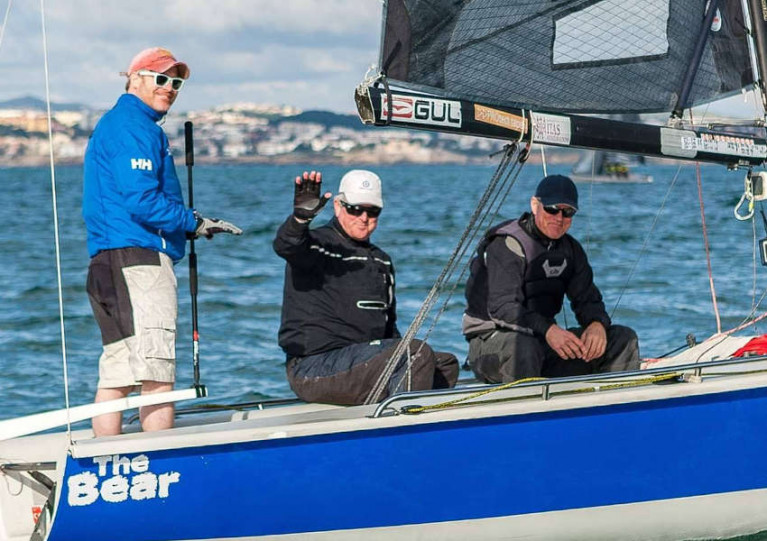Displaying items by tag: SB20 Ireland
SB20 Ireland president John Malone offered his congratulations to team Bád — Stefan Hyde, Jerry Dowling and Jimmy Dowling — who travelled to Cascais for last month’s Winter Series event, competing against 40 boats from 10 nations.
Two more weekend events remain in the series, starting 29 February and 28 March respectively, which will be great preparation for the upcoming SB20 Worlds in Cascais this September.
Boats planning to make the trip are reminded of the new ferry route from Rosslare to Bilbao, which replaces the Cork-Santander route, with booking open from 28 February.
Closer to home, 2020 kicks into gear with the SB20 Shakedown at Lough Ree Yacht Club on Saturday 14 March, if you are interested please email me. Plans are unfolding for a BBQ afterwards depending on numbers.
Before that, the best place to catchup with everyone and find a boat or crew will be next month at the SB20 class dinner, on Friday 6 March in the Royal Irish Yacht Club. Early booking is advised; email [email protected] or call 01 280 9452.
This year’s event calendar has been updated with confirmation of the Southerns and Westerns dates and venues. SB20 Ireland membership is required, set at a reduced rate of only €40 for 2020.
- May 16-17 — Easterns (Part of DL Cup, SB20, 1720, & J80), Dun Laoghaire (RIYC)
- Jun 20-21 — Northerns, Strangford Lough (SLYC)
- Jul 10-11 — Southerns (Fri & Sat before Cork Week), Crosshaven, Cork (RCYC)
- Aug 8-9 — Westerns, RStGYC
- Sept 1-5 — SB20 Worlds, Cascais (Portugal/Lisbon CNC)
- Sept 5 — Gortmore Bell, Lough Derg (Iniscealtra)
- Sept 18-20 — Nationals, Athlone (LRYC)
- Oct 17-18 — Midlands, Dromineer (LDYC)
Any further updates on these and other happenings this season will be posted on social media — which will also have details on Davy Taylor’s (Team Ted/Sin Bin) series of coaching sessions as part of DBSC Tuesday sailing, where mixing of crews to get new people on the water is encouraged.





























































